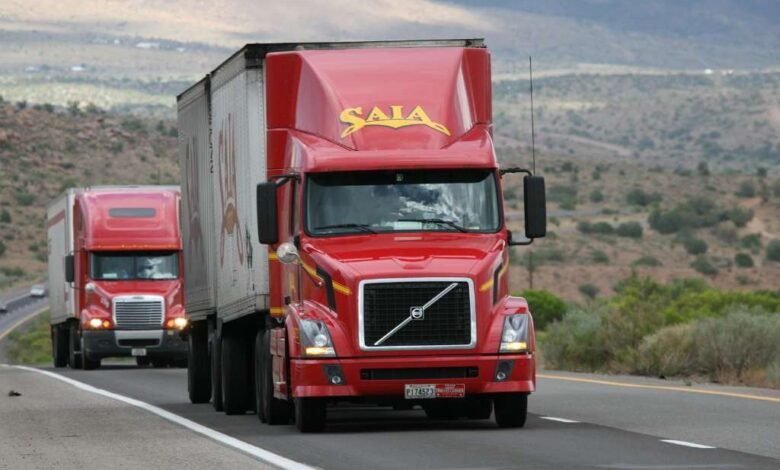The Future of Autonomous Vehicles in Freight Transportation

A technological revolution is at the gate of global logistics
Freight transport is critical to today’s economies as it connects suppliers, producers, and consumers along a complex and dynamic journey. The advancement of automated vehicles is a transformative change to freight transport that will change roles, business models, and the future of robotics, artificial intelligence and connectivity. As the number of experiments continues to expand, technology has become more reliable, small storage space for rent and more concrete data will be utilized. Therefore, the driverless vehicle may take another step closer to reality instead of being a mere dream.
Continuously improving technology foundations
Autonomous vehicle operation is based on a variety of technologies including cameras, radars and lidar sensors, artificial intelligence software, and onboard navigation – which facilitate decision-making for autonomy because they allow the vehicle to (1) see obstacles, (2) read and understand signs, (3) determine a course, and (4) anticipate roadway actor movements. The improvements in on-board processing power and in V2X (vehicle-to-everything) communications provide a means for autonomous vehicles to perform even in more dynamic and more complex environments.
Test areas: transition laboratories
Several companies are now running pilots in short defined logistics corridors. In places, like Europe, the United States, and China, autonomous vehicles have traveled long distances (hundreds of kilometers) over quiet roads between distribution centers and warehouses. These trials will allow safety protocols to be tested, to see other road users’ reactions, and establish improvements in efficiency. The results demonstrate lower operating costs, a reduction in human error, and improved management of travel time.
Gains in terms of economic growth and cost rationalization
One of the most compelling arguments for autonomous trucks is the potential for cost reduction. Businesses can reduce costs due to the schedules of the driver, limited schedules, human fatigue, or possibly human error. Autonomous-powered units operate autonomously, 24/7, without breaks, and can follow optimized delivery routes in real time. This results in more productivity, lower fuel consumption since they are anticipatorily driving, and fewer indirect costs from delay(s) or disaster associated with logistics.
The evolution of the professions of transport
Neither does the emergence of autonomous trucks or car shipping Dubai mean that people employed as drivers will be out of a job; rather, it means they will no longer be drivers and instead become fleet operators, or technical overseers, or managers of automated systems! Emerging professions include sensor maintenance, digital platform management, and onboard security for networks. The problem is how to teach these professionals about these new tools and assist them in this change. Proactive social policies are crucial in reducing tensions and facilitating the retraining process.
Important regulatory concerns
Regulations pose one of the greatest obstacles to the widespread adoption of autonomous vehicles in the freight industry. Are there any rights for driverless cars ? Who’s responsible in the event of an incident? What are the methods of insuring machines? National laws should be aligned and clearly set out the technical, legal, and ethical standards for automated transport. This covers the acceptable level of autonomy, as well as the conditions for traffic (not only on motorways or in urban zones), and the sharing of responsibility between operators, manufacturers, insurance companies, and public authorities.
Human attitudes about social acceptability and the human condition
The acceptance of technology exists in time; it is attempting to be in acceptable human experience today as above. Self-driving vehicles, for example, can raise questions of concern regarding loss of human factors in transportation, as well as risk and job losses due to automation. To develop trust with stakeholders, public demonstrations, information campaigns, and ethical responsibility of the stakeholder paradigm is paramount.
It is essential to demonstrate that the objective is safer, more sustainable, and more integrated transport that meets modern demands. Support from the community is a sine qua non condition for the successful completion of this transition.
Safety on the road and reduction in accidents
The security potential for autonomous cars is huge. The machine doesn’t get drowsy behind the wheel, go over the speed limit, or suffer emotional slips. The onboard computer can detect anomalies quicker, stop for emergencies and maintain safe distances. In the long run, this could lessen accidents involving heavy- duty vehicles. However, the systems must be tested in other weather, topographic and traffic conditions to guarantee universal security.
Connected and sustainable logistics that are sustainable and connected
Combining vehicle automation with digital management platforms, freight transportation becomes an integrated, smart, and efficient system. Routes can be incorporated, deliveries can be optimized and warehouses can be managed dynamically as well. This process results in reduced CO2 emissions, decreased urban roadway congestion and efficiency improvements. Autonomous trucks can also use hybrid or electric modes of transportation, thus keeping with the environmental changes in logistics. The future will not only be autonomous, but leaner and more aware.
Current limitations and technical challenges
While advances continue to be made, many hurdles still exist . Technologies need to operate in uncertain environments, which happens when unpredictable events happen on the construction industry, the unmarked secondary roads, or when mixed with cyclists or pedestrians. Vehicle owners also need to be concerned about cybersecurity because they must be protected from glitches in the computer systems, hacks of the secure processes, or communications errors. Additionally, the high first cost of autonomous vehicles has limited their attraction to the average consumer. The constant advancement of algorithms, lower costs for technology, and widespread use of the right infrastructure are necessary.
The intermodality and the complementarity of solutions
Autonomous vehicles are not a substitute for other modes of transport. They are rather a supplement to these modes of transportation. They are able to integrate into multimodal transportation systems, including rail, maritime, and air transport. Autonomous trucks can move between ports and a warehouse, or from the terminal to the distribution centre, for freight. Intermodality helps improve logistics coordination, which reduces lead time and encourages the efficient use of resources. In the future, freight transportation will be dependent on the smart integration of autonomous roads with other modes of transportation.
Views on geopolitics and global issues.
The largest industry players globally, including the U.S., China, and the E.U., are investing colossal sums to support research and industry partnerships while building the necessary infrastructure. Challenges to autonomy are becoming economic, strategic, and geopolitical. The ability to master algorithms, data sovereignty, and the capability to create robust systems are the primary levers of power in the realm of commerce. Countries that can successfully integrate autonomous cars into their logistical systems can increase their efficiency and reach a global market.
Future scenarios for hybrid and progressive models
In the years ahead, the deployment will be gradual. The first will be on highways that are well-marked, followed by restricted logistics zones, and then on intercity roads. Vehicles will be remotely monitored or assisted by human operators inside the cabins. Certain scenarios envisage autonomous convoys controlled by a single driver vehicle. Some hybrid models combine autonomous driving, human involvement in loading and unloading, and AI supervision. The future will consist of collaborations, gradations, and adaptations that are tailored to the territory.




